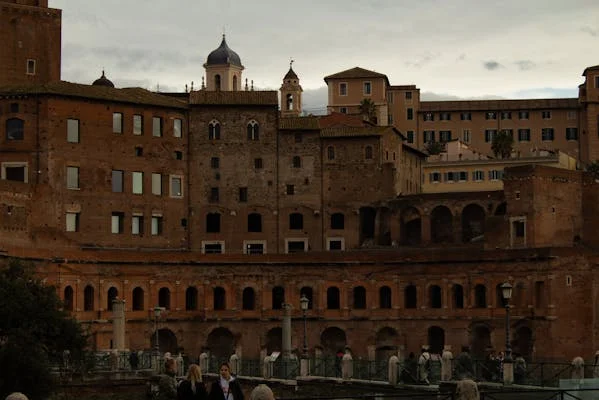Antiquità, or antiques, have captivated collectors and history enthusiasts for centuries. These objects, often rich with historical significance and intricate craftsmanship, provide a unique glimpse into the past. Whether you are a seasoned collector or a newcomer to the world of antiques, understanding the essence of antiquità is crucial for appreciating their true value.
What Are Antiquità?
Antiquità refers to objects that are more than a hundred years old, often carrying historical, cultural, or artistic value. These items can include furniture, paintings, sculptures, jewelry, and more. The value of antiquità is not only determined by their age but also by their rarity, condition, and historical importance.
Types of Antiquità
There are several different types of antiquità, each with its own unique appeal:
- Furniture: Antique furniture is highly sought after for its craftsmanship and design. Items like vintage chairs, tables, and cabinets often hold significant value due to their quality materials and intricate details.
- Artwork: Paintings and sculptures from bygone eras can also be classified as antiquità. These works are appreciated not just for their aesthetic value, but for the historical context they provide.
- Jewelry: Antique jewelry, especially pieces from renowned designers or specific historical periods, holds immense appeal among collectors and investors alike.
- Books and Manuscripts – Old books, especially first editions or rare manuscripts, are highly prized in the antiquities market.
The Historical Significance of Antiquità
Every piece of antiquità tells a story. These objects are often remnants of a bygone era, carrying within them the traditions, craftsmanship, and culture of the time they were created. The preservation of these items helps us understand history in a more tangible way. For instance, a vintage painting or a medieval piece of furniture offers insight into the artistic movements, material culture, and everyday life of the past.
How to Value Antiquità
Determining the value of antiquità can be complex. Several factors contribute to the overall worth of an antique, including:
Age
The age of an antique plays a significant role in its valuation. Generally, the older an item is, the more valuable it becomes, provided it is still in good condition. Items that are centuries old are often considered more valuable because they have withstood the test of time.
Condition
The condition of an antiquità is another key factor in determining its value. Antiques that are well-preserved, with minimal wear and tear, will typically command higher prices than those that have been damaged or altered over time.
Rarity
The rarity of an object is a critical aspect of its value. Limited-edition items, one-of-a-kind pieces, or those created by famous artisans tend to be highly prized. For instance, an antique clock made by a renowned Swiss manufacturer may fetch a significantly higher price than a generic, mass-produced item.
Provenance
The provenance, or the documented history, of an antiquità also plays a role in its value. Items with a well-documented history of ownership, especially those that have belonged to famous individuals or have been part of significant historical events, tend to have higher worth.
Craftsmanship and Artistic Merit
The quality of craftsmanship and the artistic value of an antique will also affect its price. Intricate details, the use of high-quality materials, and the skill of the artisan all contribute to the overall value of the piece.
The Appeal of Antiquità
Antiquità are more than just objects; they are tangible connections to history. For many collectors, owning an antique is like owning a piece of the past. Here are a few reasons why people are drawn to antiquità:
Historical Connection
Owning antiquità allows individuals to feel connected to past generations. Every object has a story, and collectors find joy in uncovering the narratives behind these items. Whether it’s a piece of furniture that once graced the home of a noble family or a painting that reflects the artistic movements of a specific era, antiquità help bridge the gap between past and present.
Investment Potential
Antiquità are also seen as a sound investment. As the years go by, the value of rare and well-preserved items can increase significantly. For this reason, many collectors view their antiques not just as pieces of history, but as valuable assets.
Aesthetic and Cultural Value
Many people appreciate antiquità for their beauty and cultural significance. Whether it’s the elegance of a Victorian-era armchair or the charm of an ancient Greek vase, the artistry of these objects enhances the aesthetic appeal of any home or collection.
How to Start Collecting Antiquità
If you’re interested in starting a collection of antiquità, here are some tips to help you get started:
Research and Education
Before you dive into buying antiquità, it’s essential to educate yourself about the different types of antiques and how to identify them. Books, online resources, and antique fairs can provide valuable insights into what makes an item valuable and how to spot potential fakes or reproductions.
Set a Budget
Antiquità can vary greatly in price, so it’s important to set a budget before you begin collecting. Whether you’re interested in high-end antiques or more affordable pieces, having a budget will help guide your purchases.
Attend Antique Shows and Fairs
Antique shows and fairs are excellent places to discover new pieces and meet reputable dealers. These events offer a wide variety of antiquità, allowing you to see the items in person and interact with experts who can help you make informed purchasing decisions.
Work with Reputable Dealers
When buying antiquità, it’s crucial to work with trusted dealers who can provide provenance and authenticity guarantees. Reputable dealers will also be able to offer advice and guide you in building a collection that suits your interests and budget.
Maintaining and Caring for Antiquità
Proper care and maintenance are essential for preserving the value of your antiquità. Here are a few tips to help keep your antiques in top condition:
Regular Cleaning
Keep your antiquità clean by gently dusting them with a soft cloth. Avoid harsh cleaning products, as they can damage the surface of antique items. For delicate items, consider hiring a professional conservator to clean and restore them.
Climate Control
Antiques can be sensitive to extreme temperatures and humidity levels. Store your antiquità in a climate-controlled environment to prevent damage from fluctuations in temperature or moisture.
Proper Display and Storage
When displaying antiquità, make sure to use sturdy, appropriate shelving or display cases. Store delicate items in protective cases to prevent accidental damage or exposure to sunlight, which can cause fading over time.
Conclusion
Antiquità are more than just old objects—they are windows into the past, rich with history, craftsmanship, and culture. Whether you are a collector looking to invest in valuable pieces or someone who simply appreciates the beauty of historical items, anti quità offer something for everyone. By understanding their value, history, and the best ways to care for them, you can begin your journey into the world of antiques. So, start exploring the fascinating world of anti quità today and discover the treasures of the past that await you.
FAQs About Antiquità
What does antiquità mean?
Anti quità is the Italian term for “antiques,” referring to objects that are typically more than a hundred years old and carry historical, cultural, or artistic value. These items may include furniture, artwork, jewelry, books, and other collectibles from previous centuries.
How do I determine the value of an antiquità?
The value of an anti quità is determined by several factors, including its age, condition, rarity, provenance, craftsmanship, and artistic merit. Items that are rare, in good condition, and have a well-documented history tend to be more valuable.
Where can I buy antiquità?
antiquita can be found at antique shops, online marketplaces, auctions, and antique fairs. It’s important to buy from reputable dealers or auction houses to ensure the authenticity and provenance of the items.
What makes an item an antiquità?
For an object to be classified as an anti quita, it typically must be at least 100 years old. However, its value and classification can also depend on its cultural significance, historical context, and rarity.
Are antiquità a good investment?
Yes, anti quita can be a good investment, especially rare, well-preserved items with historical importance. Over time, the value of certain antiques may increase, especially if they are in high demand among collectors or have historical significance. However, like any investment, there are risks involved.





